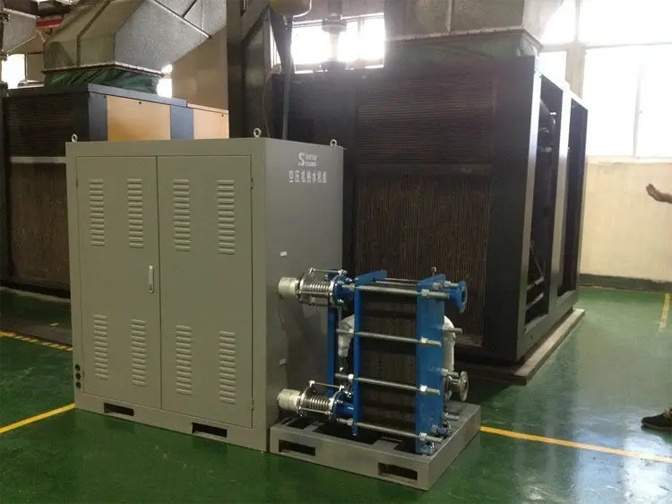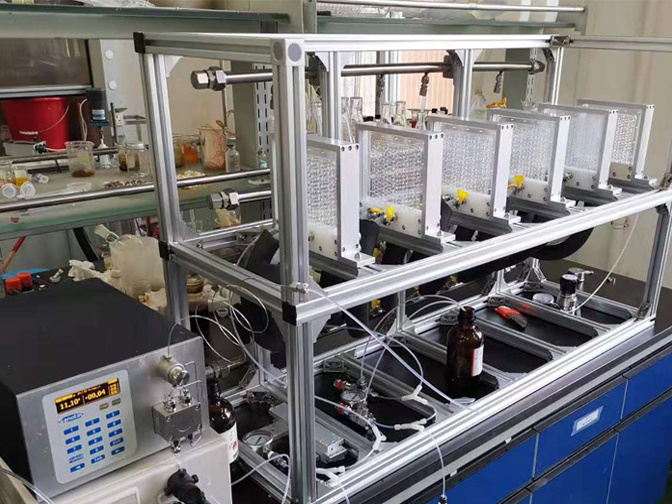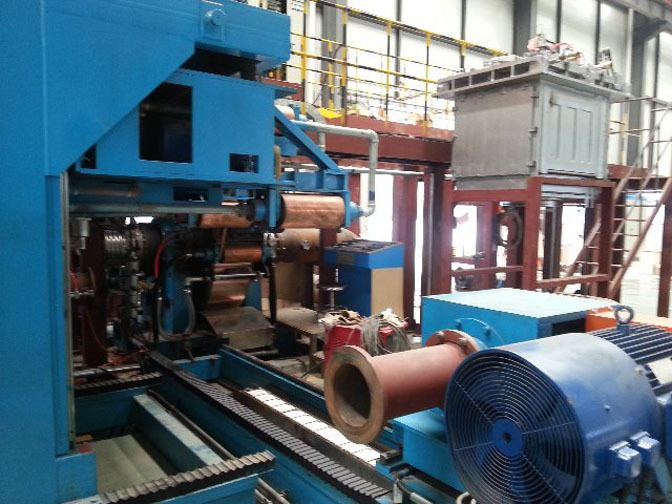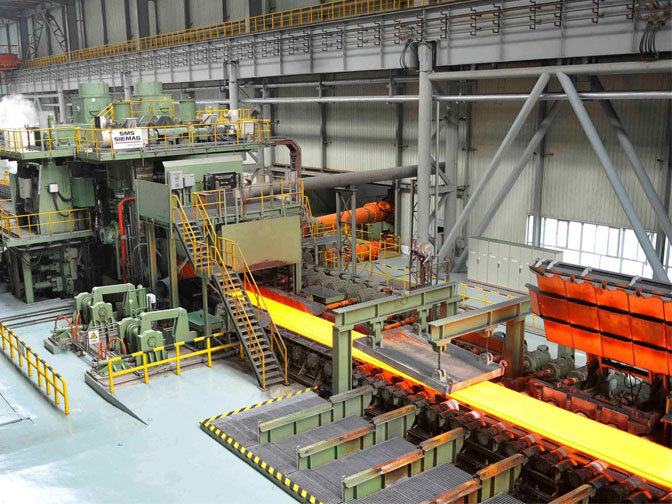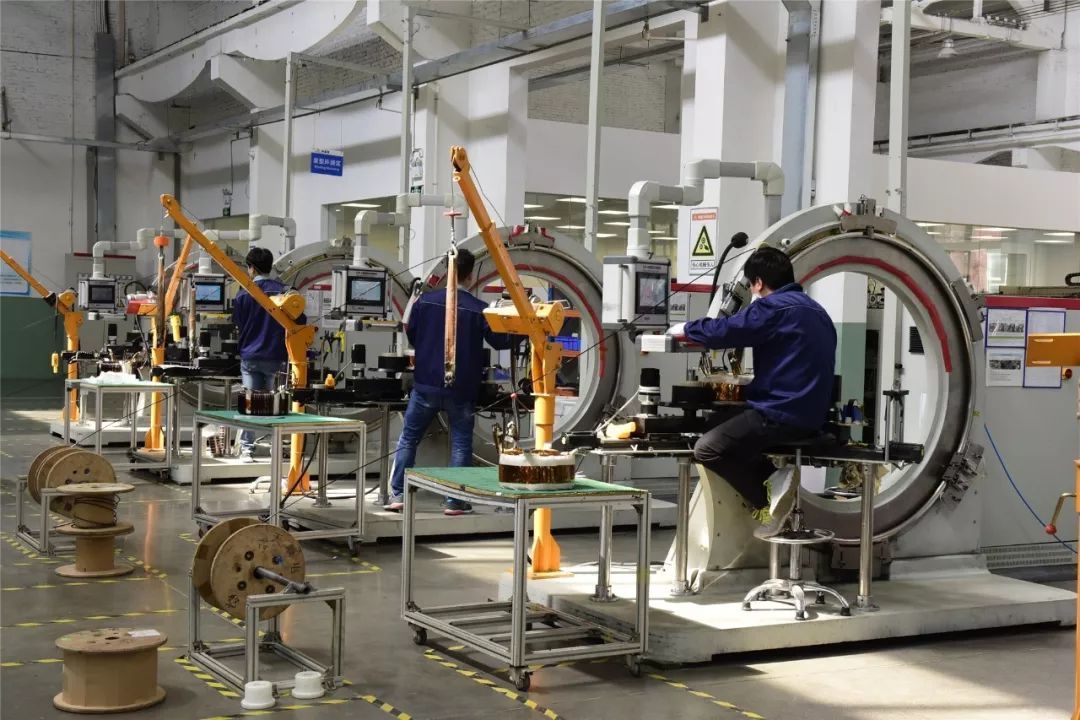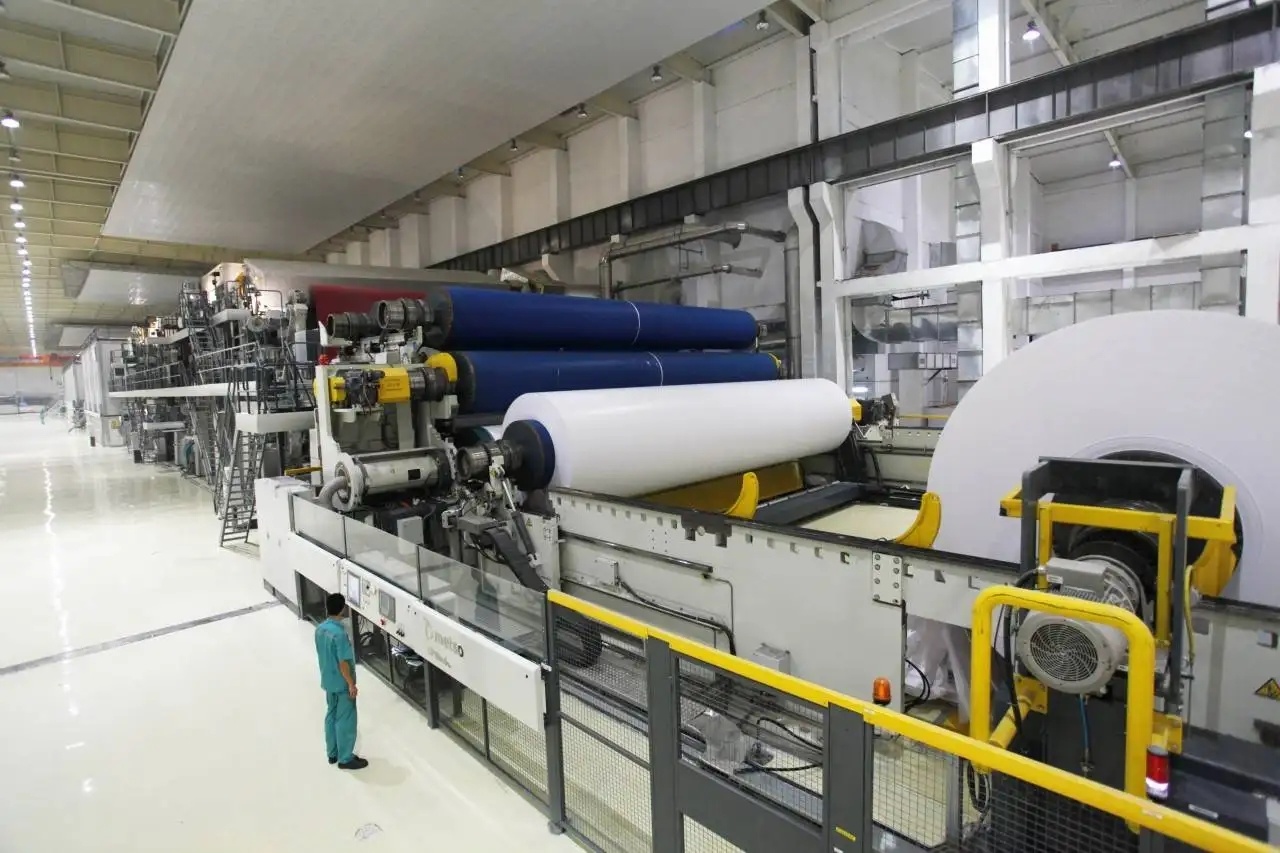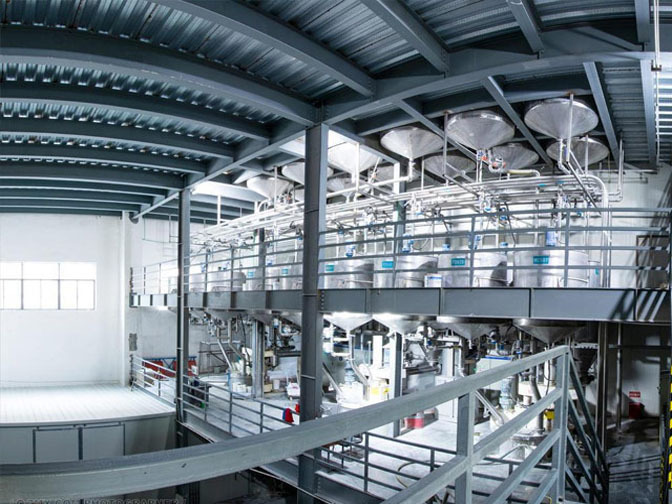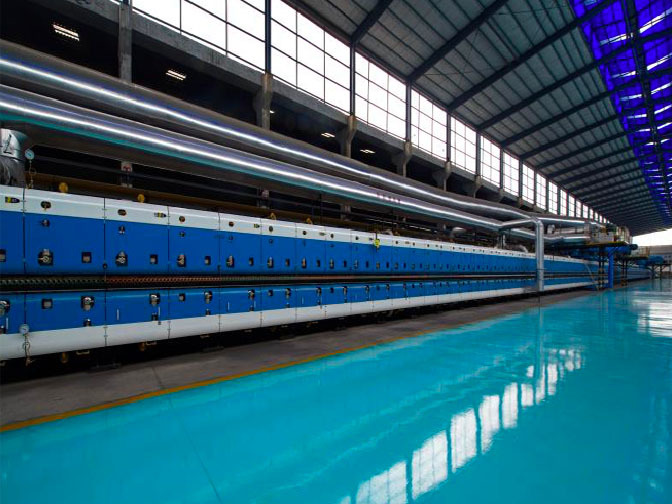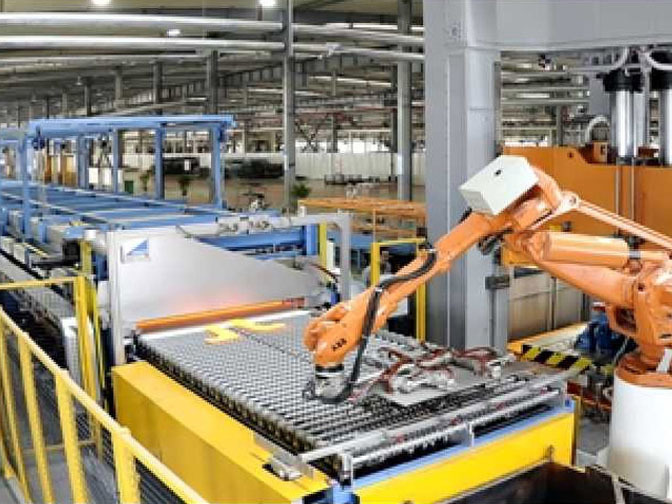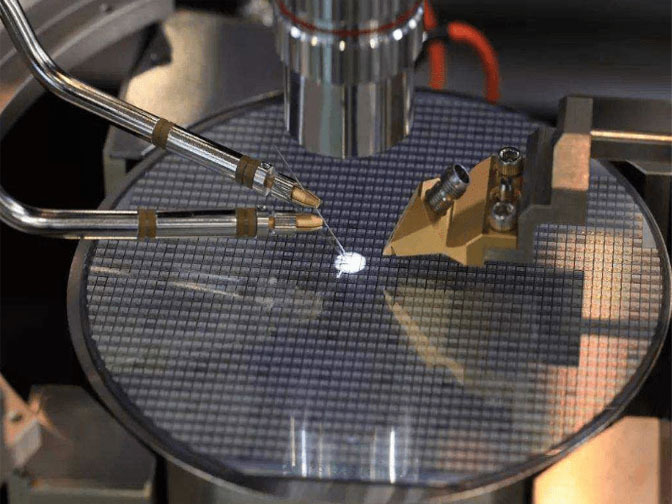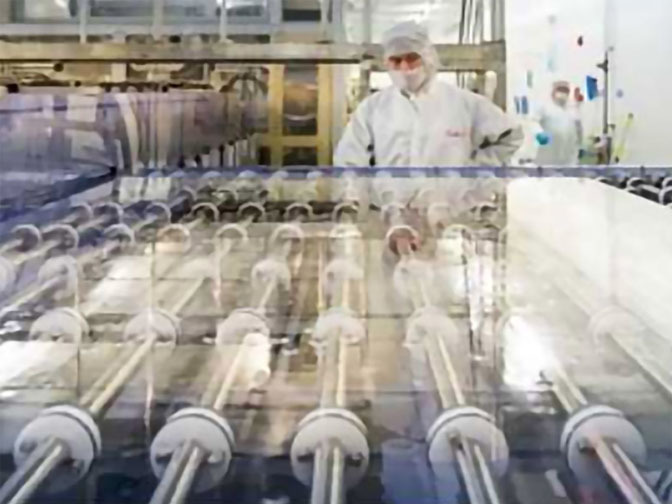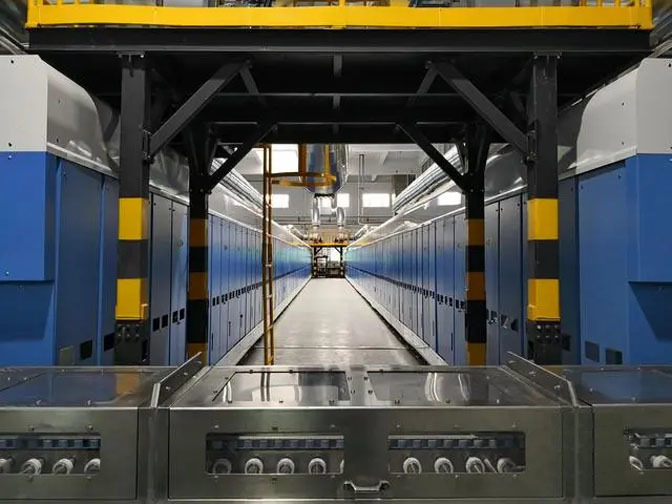New Energy - Lithium Battery
Silicon carbide ceramics have excellent thermal shock resistance, high temperature stability, creep resistance, oxidation resistance, and high temperature strength that does not decrease, and are widely used in the sintering of lithium-ion battery anode and cathode materials such as rods, beams, crucibles, and silicon carbide heating rod protective casings, as well as in solar panel production for cantilever paddles, crystal boat furnace tubes, etc.
Rollers are used in lithium battery material kilns.
Material: Reaction-sintered silicon carbide / Atmospheric pressure sintered silicon carbide.
Silicon carbide rollers, lithium battery material kiln rollers, lithium battery new energy kiln rollers.
In the lithium battery material kiln, the lithium battery anode is a kiln, and the lithium battery cathode is a resistance furnace, using silicon carbide rods as heating elements, with a rated temperature of 1300℃ and a common operating temperature of 1200℃. It uses n-type thermocouples for temperature measurement and temperature control instruments for automatic temperature control, achieving high temperature control accuracy (±1℃). The lithium battery material kiln can be used for sintering experiments of materials in a nitrogen atmosphere.
The lithium battery materials in the lithium battery material kiln include anode materials such as lithium iron phosphate, lithium cobalt oxide, lithium manganese oxide, and ternary materials, as well as cathode materials such as graphite and lithium titanate.
The kilns used for lithium battery materials mainly include push plate kilns, roller kilns, and rotary kilns. Generally, materials that require gas atmosphere protection are more often processed in push plate kilns, which have high airtightness, such as graphite materials and lithium iron phosphate materials.
The new energy vehicle industry is entering a period of rapid development, with the production and sales of new energy vehicles growing rapidly each year. As the core of new energy vehicles, power batteries are also experiencing rapid growth. We all know that batteries have a very strong pollution impact, and the issue of power battery recycling is now before us.
In 2018, the cumulative waste power batteries in China are estimated to reach about 12GWH, with a cumulative scrapping volume of about 170,000 tons. Moreover, with the development of the new energy market, the scrapping volume of waste batteries will also grow very rapidly, with an overall scale expected to reach about 22 billion yuan by 2023.
Many enterprises, research institutes, and colleges have begun to research and layout the recycling technology of waste power batteries in large numbers. The recycling and treatment of waste batteries involves various processes such as high-temperature metallurgy, physical disassembly, and hydrometallurgy.
This article focuses on the design scheme of kilns in lithium battery recycling. The recycling of lithium batteries is divided into two parts. First, we need to melt the battery electrode sheets at a temperature of about 300-400 degrees, and then sinter at a high temperature of about 900 degrees.
Currently, many institutions' lithium battery recycling projects are still in the research and development stage. This article discusses the technical requirements of a lithium battery recycling experimental furnace with a production capacity of 20 kilograms per furnace.
The design temperature is 1050 degrees, and the heating element is chosen to be silicon carbide rods, as insulation is needed when processing electrode sheets at around 400 degrees. It is particularly emphasized that there will be a drift phenomenon in temperature within this temperature range, but this does not affect the pre-sintering treatment, which is limited by the physical properties of the heating elements of the sintering furnace.
The choice of furnace chamber material is alumina hollow ball material, and the heating element is protected by corundum tubes. The furnace chamber dimensions are 490mm deep, 950mm wide, and 260mm high, using crucible dimensions of 330mm long and wide, and 100mm high, arranged in 2 rows and 2 layers. The atmosphere inside the furnace is oxygen protection. The design power is 28KW.
In addition, this new type of structured kiln is widely used in.Lithium cobalt oxide.、Lithium manganese oxide.Lithium ion.Ternary materials.、Cobalt oxide.、Pearlescent powder.、Ultra-pure powder.、Magnetic materials.、Petroleum catalysts.、Glass crystallization.And used at working temperatures below 1200℃. At the same time, it is widely used in lithium battery new energy kilns.Roller kilns.Are a type of high-efficiency kiln with high output and low energy consumption, initially used in the building ceramics, sanitary ceramics, and daily-use ceramics industries. Due to its many advantages, with the development of silicon carbide roller materials, silicon carbide rollers are now widely used in industries such as lithium battery materials, rare earths, magnetic material raw materials, electronic powders, and electrical porcelain parts. The emergence of silicon carbide rollers allows for furnace temperatures up to 1200℃. When high output is required.High output.When investing, roller kilns are the first choice for new energy lithium battery anode materials, and silicon carbide rollers are the first choice for kiln companions.
Currently, silicon carbide rollers are widely used in lithium battery new energy kilns, especially for the production of lithium battery anode materials!
| Project. |
Unit. |
Data. |
| Operating temperature. |
℃. |
1380 |
| Density. |
g/cm³. |
>=3.02. |
| Porosity. |
% |
<0.1. |
| Flexural strength. |
Mpa. |
250 (20℃). |
| Mpa. |
280 (1200℃). |
|
| Elastic modulus. |
Gpa. |
330 (20℃). |
| Gpa. |
300 (1200℃). |
|
| Thermal conductivity. |
W/m.k |
45 (1200℃). |
| Coefficient of thermal expansion |
K-1×10-6 |
4.5 |
| Mohs hardness |
13 |
|
| Acidity and alkalinity |
Excellent |
Silicon carbide rods, with their unique formula and process, outperform alumina rods by 3-5 times in terms of thermal shock stability and high-temperature load resistance, while the price is only 20-25% of that of recrystallized silicon carbide. Silicon carbide rods are suitable for high-temperature firing zones of roller kilns for daily porcelain, sanitary porcelain, building ceramics, magnetic materials, etc. This product has a high-temperature load capacity, does not bend or deform during long-term use, and has a service life more than 10 times that of alumina ceramic rods.
| Length (m) |
Cross-sectional Size |
Concentrated load capacity (kg) |
Uniform load resultant (kg) |
||
| L |
D1 |
D2 |
delta |
||
| 1 |
35 |
23 |
6 |
70 |
140 |
| 1 |
40 |
28 |
6 |
97 |
194 |
| 1 |
45 |
33 |
6 |
130 |
260 |
| 1 |
60 |
46 |
7 |
283 |
566 |
| 1 |
80 |
46 |
8 |
604 |
1208 |
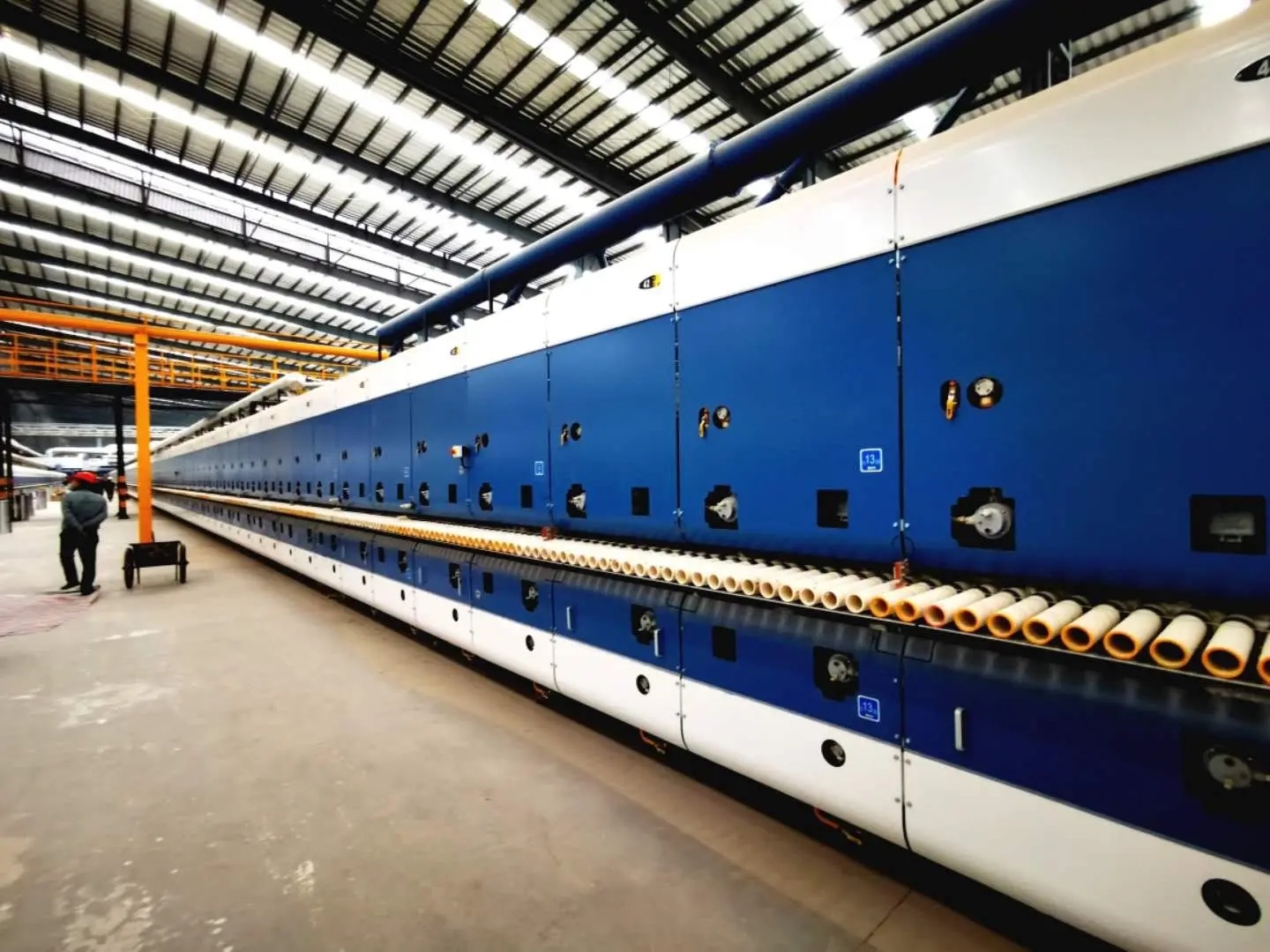
New Energy - Lithium Battery
Silicon carbide ceramics have excellent thermal shock resistance, high temperature stability, creep resistance, oxidation resistance, and high temperature strength that does not decrease, and are widely used in the sintering of lithium-ion battery anode and cathode materials such as rods, beams, crucibles, and silicon carbide heating rod protective casings, as well as in solar panel production for cantilever paddles, crystal boat furnace tubes, etc.
Rollers are used in lithium battery material kilns.
Material: Reaction-sintered silicon carbide / Atmospheric pressure sintered silicon carbide.
Silicon carbide rollers, lithium battery material kiln rollers, lithium battery new energy kiln rollers.
In the lithium battery material kiln, the lithium battery anode is a kiln, and the lithium battery cathode is a resistance furnace, using silicon carbide rods as heating elements, with a rated temperature of 1300℃ and a common operating temperature of 1200℃. It uses n-type thermocouples for temperature measurement and temperature control instruments for automatic temperature control, achieving high temperature control accuracy (±1℃). The lithium battery material kiln can be used for sintering experiments of materials in a nitrogen atmosphere.
The lithium battery materials in the lithium battery material kiln include anode materials such as lithium iron phosphate, lithium cobalt oxide, lithium manganese oxide, and ternary materials, as well as cathode materials such as graphite and lithium titanate.
The kilns used for lithium battery materials mainly include push plate kilns, roller kilns, and rotary kilns. Generally, materials that require gas atmosphere protection are more often processed in push plate kilns, which have high airtightness, such as graphite materials and lithium iron phosphate materials.
The new energy vehicle industry is entering a period of rapid development, with the production and sales of new energy vehicles growing rapidly each year. As the core of new energy vehicles, power batteries are also experiencing rapid growth. We all know that batteries have a very strong pollution impact, and the issue of power battery recycling is now before us.
In 2018, the cumulative waste power batteries in China are estimated to reach about 12GWH, with a cumulative scrapping volume of about 170,000 tons. Moreover, with the development of the new energy market, the scrapping volume of waste batteries will also grow very rapidly, with an overall scale expected to reach about 22 billion yuan by 2023.
Many enterprises, research institutes, and colleges have begun to research and layout the recycling technology of waste power batteries in large numbers. The recycling and treatment of waste batteries involves various processes such as high-temperature metallurgy, physical disassembly, and hydrometallurgy.
This article focuses on the design scheme of kilns in lithium battery recycling. The recycling of lithium batteries is divided into two parts. First, we need to melt the battery electrode sheets at a temperature of about 300-400 degrees, and then sinter at a high temperature of about 900 degrees.
Currently, many institutions' lithium battery recycling projects are still in the research and development stage. This article discusses the technical requirements of a lithium battery recycling experimental furnace with a production capacity of 20 kilograms per furnace.
The design temperature is 1050 degrees, and the heating element is chosen to be silicon carbide rods, as insulation is needed when processing electrode sheets at around 400 degrees. It is particularly emphasized that there will be a drift phenomenon in temperature within this temperature range, but this does not affect the pre-sintering treatment, which is limited by the physical properties of the heating elements of the sintering furnace.
The choice of furnace chamber material is alumina hollow ball material, and the heating element is protected by corundum tubes. The furnace chamber dimensions are 490mm deep, 950mm wide, and 260mm high, using crucible dimensions of 330mm long and wide, and 100mm high, arranged in 2 rows and 2 layers. The atmosphere inside the furnace is oxygen protection. The design power is 28KW.
In addition, this new type of structured kiln is widely used in.Lithium cobalt oxide.、Lithium manganese oxide.Lithium ion.Ternary materials.、Cobalt oxide.、Pearlescent powder.、Ultra-pure powder.、Magnetic materials.、Petroleum catalysts.、Glass crystallization.And used at working temperatures below 1200℃. At the same time, it is widely used in lithium battery new energy kilns.Roller kilns.Are a type of high-efficiency kiln with high output and low energy consumption, initially used in the building ceramics, sanitary ceramics, and daily-use ceramics industries. Due to its many advantages, with the development of silicon carbide roller materials, silicon carbide rollers are now widely used in industries such as lithium battery materials, rare earths, magnetic material raw materials, electronic powders, and electrical porcelain parts. The emergence of silicon carbide rollers allows for furnace temperatures up to 1200℃. When high output is required.High output.When investing, roller kilns are the first choice for new energy lithium battery anode materials, and silicon carbide rollers are the first choice for kiln companions.
Currently, silicon carbide rollers are widely used in lithium battery new energy kilns, especially for the production of lithium battery anode materials!
| Project. |
Unit. |
Data. |
| Operating temperature. |
℃. |
1380 |
| Density. |
g/cm³. |
>=3.02. |
| Porosity. |
% |
<0.1. |
| Flexural strength. |
Mpa. |
250 (20℃). |
| Mpa. |
280 (1200℃). |
|
| Elastic modulus. |
Gpa. |
330 (20℃). |
| Gpa. |
300 (1200℃). |
|
| Thermal conductivity. |
W/m.k |
45 (1200℃). |
| Coefficient of thermal expansion |
K-1×10-6 |
4.5 |
| Mohs hardness |
13 |
|
| Acidity and alkalinity |
Excellent |
Silicon carbide rods, with their unique formula and process, outperform alumina rods by 3-5 times in terms of thermal shock stability and high-temperature load resistance, while the price is only 20-25% of that of recrystallized silicon carbide. Silicon carbide rods are suitable for high-temperature firing zones of roller kilns for daily porcelain, sanitary porcelain, building ceramics, magnetic materials, etc. This product has a high-temperature load capacity, does not bend or deform during long-term use, and has a service life more than 10 times that of alumina ceramic rods.
| Length (m) |
Cross-sectional Size |
Concentrated load capacity (kg) |
Uniform load resultant (kg) |
||
| L |
D1 |
D2 |
delta |
||
| 1 |
35 |
23 |
6 |
70 |
140 |
| 1 |
40 |
28 |
6 |
97 |
194 |
| 1 |
45 |
33 |
6 |
130 |
260 |
| 1 |
60 |
46 |
7 |
283 |
566 |
| 1 |
80 |
46 |
8 |
604 |
1208 |





